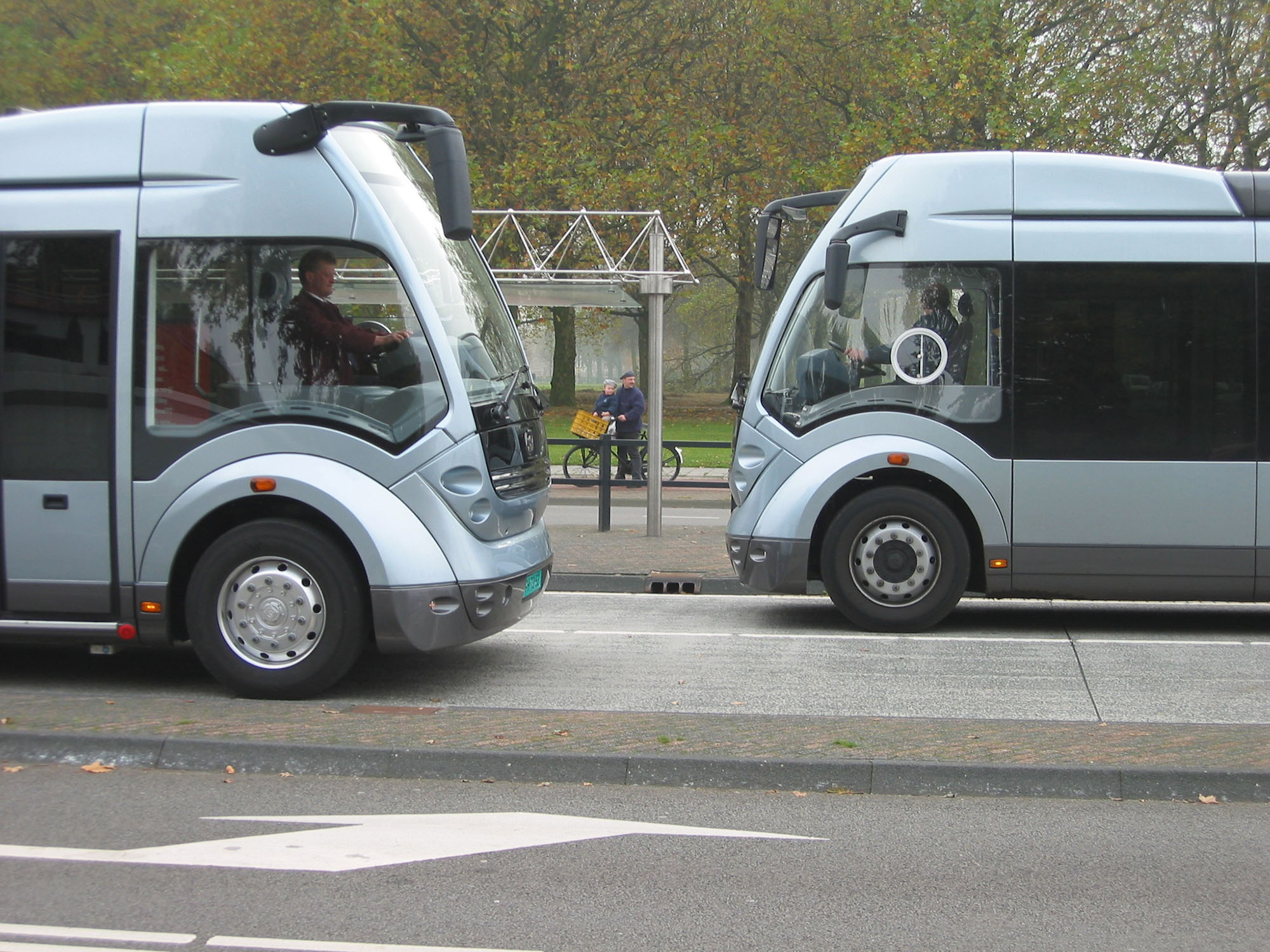20Vehicles
Don’t worry, sweetie, don’t worry! Nobody in New York notices a bus until it’s about to hit them! (Samantha in “Sex and the City”)Kim Cattrall, actress, 1956–
Overview
Few decisions in the development of a BRT system invoke more debate than the choice of vehicle-propulsion technology and vehicle manufacturer. Even though BRT is far more than just a bus, the choice of vehicle technology is important, as it will strongly influence the system’s performance.
Regardless of whether the vehicle procurement is public or private, the technical specifications of the vehicle selected will mostly have to be set by the system’s designers, so that they interface properly with the infrastructure. The current common practice is for the public agency to set vehicle standards while the private sector actually purchases and operates the vehicles. Thus, while a standard set of basic requirements must be met, many decisions, such as vehicle manufacturer, are actually left to the operating companies. The public agency will likely develop a detailed set of vehicle specifications that each operator will be required to fulfill. However, it is up to the vehicle operator, who is paying for the vehicles, to determine how to best meet the specifications. For example, within Bogotá’s TransMilenio system, different operating companies have selected different vehicle manufacturers. However, thanks to the detailed specifications, from the perspective of the customer, all of the vehicles look and operate identically. This commonality is important to creating and preserving a clear system identity.

Operators purchasing BRT vehicles must weigh many factors in choosing a fuel and propulsion-system technology. Beyond basic vehicle prices, a host of issues must be considered. Will the vehicle technology meet required emission standards? Will the size and design of the vehicle fulfill capacity requirements? Does the technology have a history of operating consistently in developing-city conditions? Does the technology require maintenance personnel with highly specialized skills? Are spare parts for the technology expensive and difficult to obtain in a developing city? Are special refueling stations required for the technology? Is the technology selected financially viable? An attractive, sophisticated vehicle technology may entice decision-makers to make an instinctive choice, but nevertheless, basic questions about maintenance, spare parts, and operational costs should be an integral part of the decision-making process (Figure 20.2).